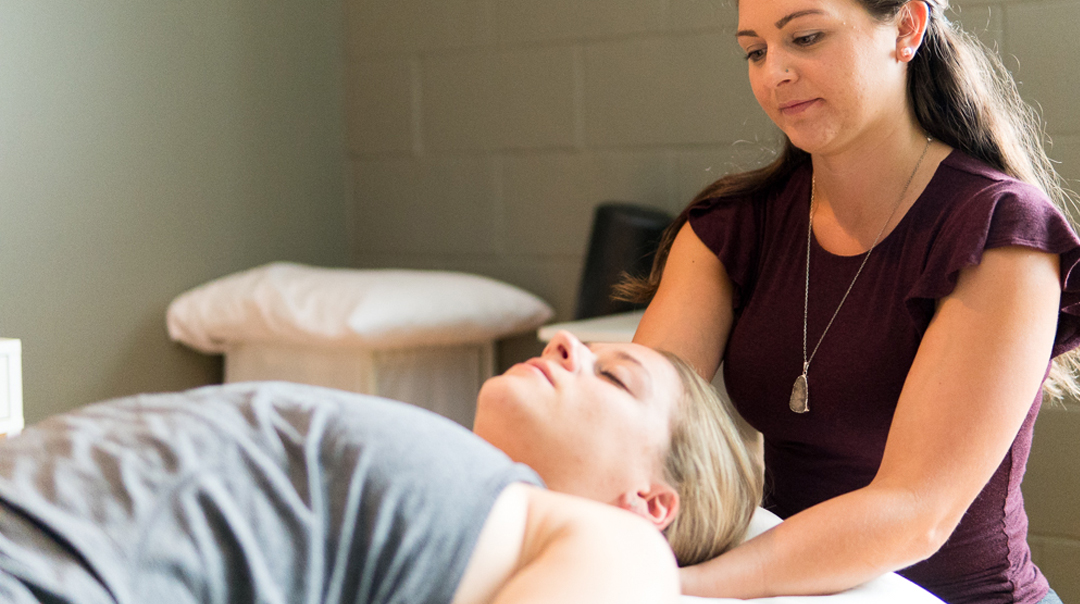We field a lot of questions about craniosacral therapy, and our own Krista Budgell put together this post that includes some of the most frequently asked questions ones in an effort to explain its benefits and applications.
Q: What is craniosacral therapy?
Craniosacral therapy (CST) is a gentle, hands-on method used to evaluate and enhance the function of the craniosacral system, comprised of the the bones of the head (cranium) and spine (sacral), the connective tissue membranes and the cerebrospinal fluid that surrounds and nourishes the brain and spinal cord. It is increasingly used in the treatment of pain, stress disorders, rehabilitation and preventative wellness, and is so subtle that is can be used on acute, sub-acute and chronic conditions.
Q: How does CST work?
This therapy is based on the understanding that the bones of the cranium subtly move in response to volume changes in the cerebrospinal fluid (CSF) that bathes and protects the brain and spinal cord. This movement radiates outward from the craniosacral system in a characteristic rhythm, kind of like a pulse. This natural movement is altered when everyday stress and injury creates strain in the soft tissues of the body and lead to tension in the membranes of craniosacral system. These restrictions not only hinder CSF flow, but may limit bony and fascial movement further to impair the healthy function of the body.
Q: How does the CST help?
CST helps restore normal cranial mobility and optimizes CSF movement throughout the craniosacral system. It can release abnormal tension in the membrane system of the head and spine, ease restrictions of the nerves and can release abnormal myofascial restrictions in the body. Posture can be improved as misaligned bones are restored to their proper positions. Most importantly, CST soothes the nervous system, reduces the body’s stress response, eases aches and pains, enhances relaxation and feels great.
Q: How does CST differ from regular massage therapy?
The hands-on techniques are surprisingly light. By using the hands as fine discriminating tools, craniosacral therapists are able to detect very subtle disturbances in the craniosacral rhythm to identify and treat areas of dysfunction, such as cranial, sutural, membrane and other soft tissue restrictions in the body.
Q: How can such a light touch do anything?
Craniosacral therapy is effective because it is subtle and non-invasive. The gentle light touch techniques do not provoke a reactive or protective response in the body. This is can be particularly beneficial for a person who, for a variety of reasons, cannot tolerate deeper pressure or more invasive techniques.
Q: Who can craniosacral therapy help?
Craniosacral therapy is beneficial for those with:
- Headaches
- Stress disorders and insomnia
- Pain syndromes and neurological conditions
- Post trauma
- Whiplash
- Concussions
- TMJ syndrome
- Recurrent ear infections
- Gross and fine motor problems
- Developmental delays
- Learning difficulties
- Tinnitus, hearing loss and vertigo
- Muscle and joint pain/injury
Questions or comments about CST? Let us know! Book an appointment or contact us.




Recent Comments